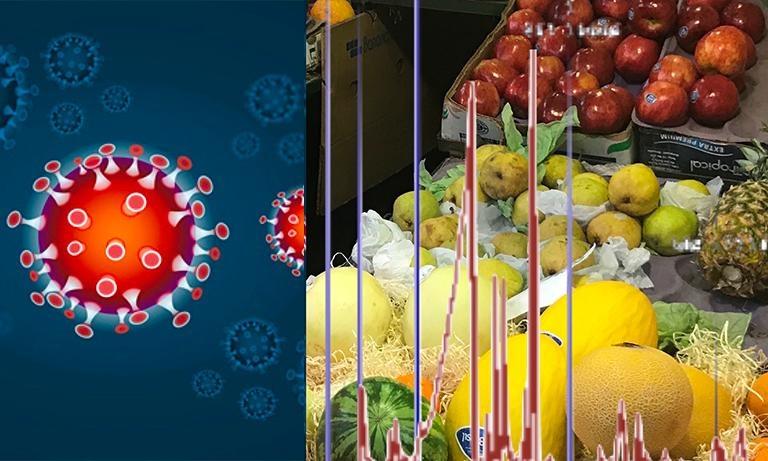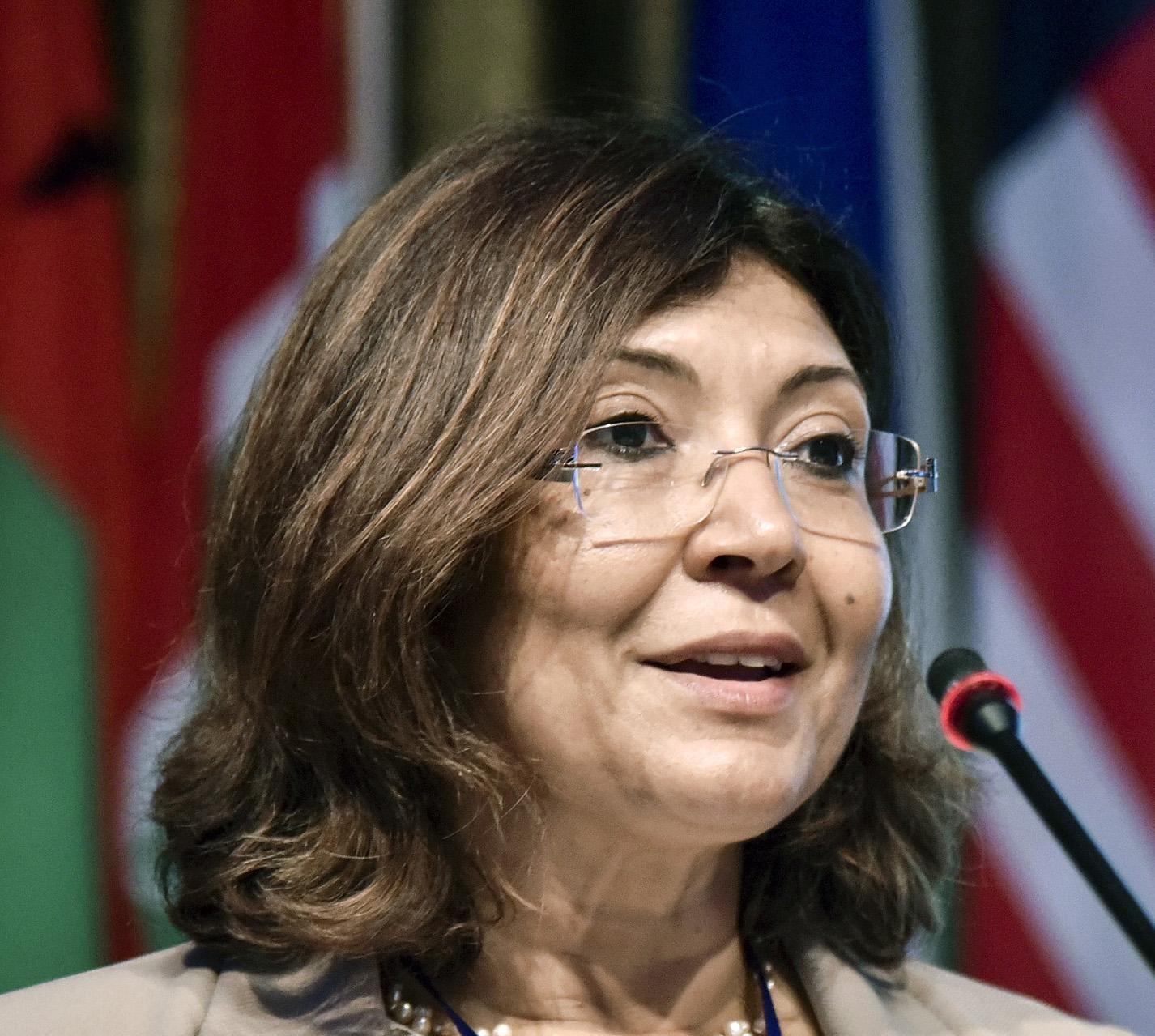
FAO’S major challenge today is securing healthy and sustainable food systems worldwide
Interview to Maria Helena Semedo
FAO recognizes that recognizes that the world facesfar-reaching, complex and interconnected challenges. This has been exacerbated by the COVID-19 pandemic, a global crisis which is affecting the food and agriculture sector. Prompt measure to ensure that food supply chains are kept alive, domestically and internationally, to mitigate the risk of large shocks that would have significant impact on everybody – particularly the poor and most vulnerable

The evolution towards sustainability in agriculture and agri-food systems is a major challenge for the implementation of development strategies and policies. Good agricultural practices not only respond to man’s primary need of food production, they also entail correct management and conservation of natural resources, the safeguard of the territory and the protection of biodiversity. Mrs Semedo, what are FAO’s main policies, today, to head in that direction?
FAO recognizes that today’s challenges are far-reaching, complex and interconnected. More than ever, as with our response to COVID-19, we focus on a holistic and multi-pronged, multi-sectoral, contextual and inclusive response to face them. We have been very active in mainstreaming biodiversity across the agricultural sectors and recently adopted a corporate strategy on biodiversity. As such, FAO has been working very closely with its Member countries, partners and key development stakeholders to help contribute to a more dynamic and integrated policy environment to address hunger and malnutrition, that will enhance the sustainability of agriculture at large, including forestry, fisheries and aquaculture and that encompass nutrition-related issues such as transboundary diseases and pest control. We have a great opportunity to build a robust post-2020 global biodiversity framework at the next UN Biodiversity Conference.
A great opportunity but also a remarkable endeavour, how can you determine how progress?
Standards, tools and policies can help shape and determine how we move forward. FAO has many examples that promote biodiversity conservation through sustainable development of the agricultural sectors for food and nutrition security. For instance, the Code of Conduct for Responsible Fisheries which celebrates its 25th anniversary this year, is the global reference that ensures sustainable fishing and management based on principles built on respect for the ecosystem and biodiversity. The International Treaty on Plant Genetic Resources for Food and Agriculture ensures that farmers, plant breeders and scientists have access to plant genetic materials necessary for agricultural innovation. The International Plant Protection Convention (IPPC) ensures that pests and diseases do not become one of the main drivers of biodiversity loss, something we will highlight all along this special International Year of Plant Health. FAO also coordinates prevention, preparedness and detection activities in animals, in liaison with WHO and OIE based on the One Health approach, a unifying force to safeguard human and animal health, to reduce disease threats and to ensure a safe food supply through effective and responsible management of natural resources.
According to FAO, in 2050 the world population will reach almost 10 billion people, with an estimated food demand requiring twice as produce as in 2012. In order to achieve this objective, what steps have been taken over the last few years? And what are the most critical issues still to be faced? What about the goals set by the 2030 Agenda, particularly improving agricultural productivity and ending malnutrition in developing Countries? Are we progressing?
The current situation on food security and nutrition indicates that we still have 821 million people suffering from hunger and two billion people suffering from non-communicable diseases such as malnutrition and obesity. Even though we produce enough food to feed everyone, today’s food systems are not able to meet the food demands of our growing and increasingly urbanized population in a holistic and sustainable way. We must take appropriate action in order to avoid that the impacts of climate change, environmental degradation, malnutrition and chronic diseases become irreversible. The 2030 Agenda challenges countries to eliminate all forms of hunger and malnutrition by ensuring that a sufficient quantity of safe, nutritious and affordable food is available to all people on this planet, to build a future where no one is left behind. At the same time, the interconnected nature of the Agenda requires countries to create fair growth and employment opportunities, especially for women and youth, needed to eradicate poverty, avoid biodiversity loss and over-exploitation of natural resources, as well as adapting to the growing pressure of climate change.
What, do you think, are the most urgent needs?
We need our agro-food systems to deliver food security and nutrition to everyone, to be socially, environmentally and economically sustainable, to be inclusive and equitable, and to have a positive impact on our planet. We especially see this with the implications of the COVID-19 pandemic. With only ten years to go, we are off track to reach our shared vision to end poverty, preserve our resources and build a peaceful world. To fulfil our aspirations, all key actors must join hands urgently to remedy the current situation. We need to work together to bring about transformation to achieve the Sustainable Development Goals. To this end, the 2021 UN Food Systems Summit, to be hosted by the UN Secretary General, is an excellent opportunity to reflect and agree on what actions should be taken. The Summit will galvanize stakeholders around the common objective of maximizing the co-benefits of a food systems approach across the entire 2030 Agenda for Sustainable Development and face the challenges of climate change. Not only will the Summit provide a key contribution to the Decade of Action to deliver the Sustainable Development Goals, it will also help expand our knowledge, share experience and approaches, and create a big momentum for unleashing the benefits of healthy and sustainable food systems for all people.
The fight against global warming is a main priority to preserve our common future. At the United Nations Climate Change Conference in Paris, in December 2015, you pointed out that “if there are no policies that integrate agriculture, because it is only seen as a threat, there will be more hungry people in the world”, which means increasing the risk of climate migrations. How is it possible to ensure food security while fighting global warming, that is reducing emissions but that also helping in ending hunger?
Transforming agriculture and food systems is a critical opportunity to both improving the sustainable use of our natural resources and tackling climate change while enhancing human development. Achieving food security and improved nutrition should be steered in a way that reduces the pressure of food production on land use and reduces its climate footprint. Considering that agriculture, including forestry, fisheries and livestock production, generate around a fifth of the world’s greenhouse gas emissions, we can also make agriculture part of the solution to help reduce GHG to achieve the goal of limiting global warming to 2 °C and achieving the Paris Agreement. For instance, coupled with reforestation and afforestation, sustainable soil and water management have the potential of drastically reducing CO2 emissions fundamental contribution to achieving the Paris Agreement.
In your opinion, how can research and innovation help in achieving sustainability in agriculture?
I believe that research, innovation, new technologies all have a fundamental and critical role to play both in achieving sustainable agriculture but also in transforming our agri-food systems. In order to accelerate the transformation of our food systems, we need to take advantage of digitalization, because we are now in the digital world. It is vital to promote digital farming, digital rural development together, and in addition, to making use of acquired wisdom, practice and experience of traditional approaches. And farmers, especially those in remote rural areas, should be given more access to digital dividends in the fight against poverty and the digital divide among the countries and regions, and between cities and the countryside that need to be narrowed. Analyzing big data and using new technologies in our work is a real break-through: satellite imaging, remote sensors, mobile and blockchain applications, to name a few. FAO already uses many of these tools in projects to optimize food chains, manage water resources, fight against pests and diseases, monitor forests, identify species, increase preparedness of farmers when disasters strike and in many other activities. We need to work together with farmers, foresters, fishers and all those involved in agri-food systems to have scientifically-sound, evidence-proofed solutions for sustainability in agriculture.
Two years ago, as a representative of FAO, you signed a memorandum between FAO and four research institutions -ENEA, CNR, CREA and ISPRA- involving over 10 thousand researchers and 100 research centers throughout Italy, in cooperation activities aimed at the management of natural resources and food systems in a safe and sustainable way. What is your assessment of the results obtained so far?
This collaboration has shown to be very positive, adding value to our work and mutually enriching our overall cooperation with our Italian research partners. I can say that the activities and efforts we have so far built together reflect our common goals and are closely aligned with the overarching vision of the 2030 Agenda. Here are a few examples: the activities on Sustainable Agriculture Water Use that the Italian Coordination Group is developing under the umbrella of WASAG are based on the fundamental goal of ensuring food security and ending hunger, as well as the vulnerability of food production systems to climate change. Ecosystem-based Conservation Agriculture supported by the collaboration with CREA is the cornerstone of sustainable crop production intensification, climate change adaptation and mitigation. The sustainable intensification of crop production through improved management of agro-ecosystems contributes to work on SDs 2 on Zero Hunger, SDG 12 on Responsible Consumption and Production, and SDG 13 on Climate Action. ENEA and CREA are front-runners in quantifying soil carbon sequestration and the environmental footprint of livestock products. Their technical knowledge has been contributing to the success of the FAO LEAP Partnership through active participation in the consensus building process. While CREA is mandated by the Italian Ministry of Agriculture, Food Forestry and Tourism to represent Italy in the FAO LEAP Steering Committee, ENEA is a LEAP partner contributing through technical input when requested and facilitating public reviews of LEAP guidelines through the Italian Network on LCA whose Secretariat is hosted by ENEA.
Strategic partnerships such as the one we have forged with the four research institutions are vital to moving forward in order to scale-up, innovate, replicate and learn from each other. We need to accelerate our actions and solutions and we can only do so by working together.

